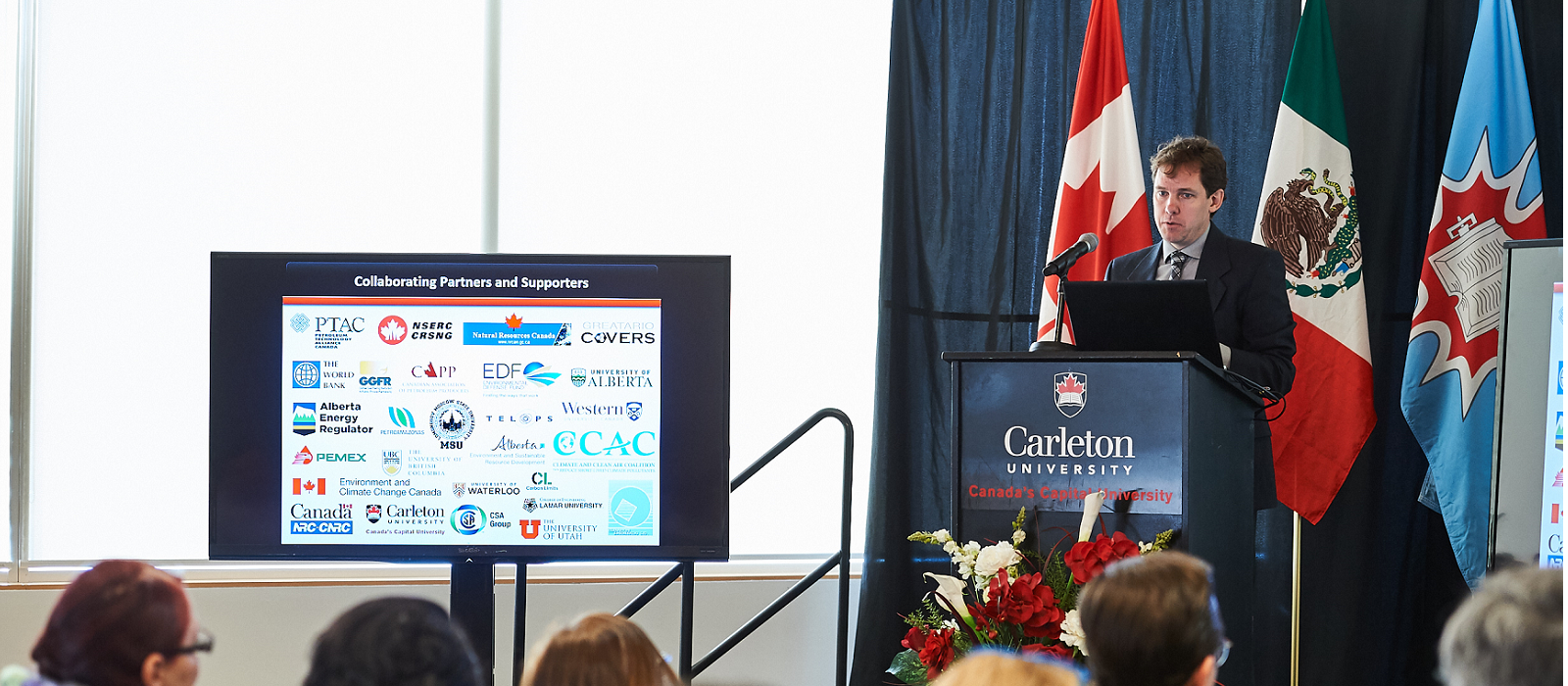
Led by Matthew Johnson our of the Energy & Emissions Research Lab, the NSERC FlareNet Strategic Network is a large-scale collaboration among researchers at Carleton University, University of Alberta, Western University, University of British Columbia, University of Waterloo, and National Research Council, and is further backed by an array of national and international partners including the Petroleum Technology Alliance of Canada (PTAC), World Bank Global Gas Flaring Reduction Partnership (GGFR), Alberta Energy Regulator (AER), Environment Canada, Natural Resources Canada, Alberta Environment and Parks, and Clearstone Engineering Ltd.. The overall objectives of FlareNet are to provide quantitative understanding of flare generated pollutant emissions critical to enabling science-based regulations, accurate pollutant inventories, understanding of climate forcing and health implications, and engineering design and assessment of mitigation strategies to minimize environmental impacts in the energy sector. Research combines large-scale experiments in the Carleton University flare facility and the Western University Boundary Layer Windtunnel Facility, with field experiments using a range of developed optical methods.
Research is organized under five main themes:
1. Flare Emissions during Flowback of Hydrofractured Wells
2. Emissions of Steam- and Air-Assisted Flares
3. Effects of Real-World Turbulent Wind on Flare Emissions
4. Properties of Emitted Particulate and Black Carbon
5. Development and application of novel field measurement technologies
